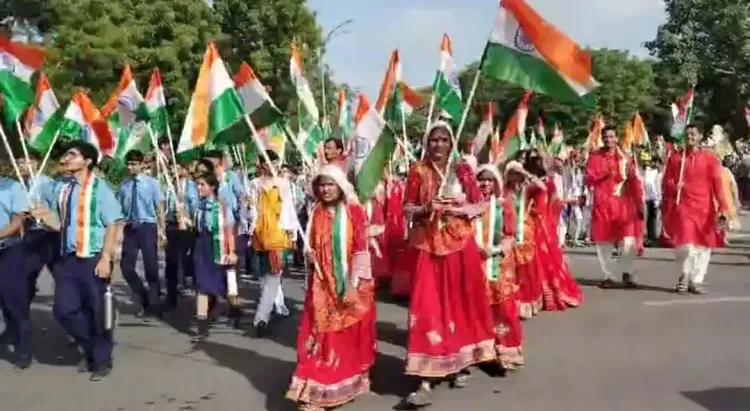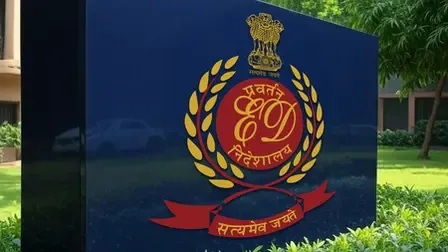Is Gujarat's Grand Tiranga Yatra the Ultimate Expression of National Pride?

Synopsis
Key Takeaways
- Patriotism: The Tiranga Yatra exemplifies the collective spirit of national pride.
- Community Involvement: The participation of various leaders and citizens highlights unity.
- Historical Significance: Independence Day is a reminder of the sacrifices made for freedom.
- Cultural Display: The event showcases the vibrant cultural heritage of India.
- Legacy: Celebrations evoke nostalgia and respect for the nation’s history.
Gandhinagar, Aug 12 (NationPress) In response to Prime Minister Narendra Modi's call, a vibrant Tiranga Yatra unfolded nationwide on Tuesday, igniting a spirit of patriotism and unity as Independence Day approaches. The city of Gandhinagar in Gujarat was a canvas of national pride, with hundreds of citizens participating in the yatra, which began from Sector 6 and spanned approximately 2 to 3 kilometers.
The rally was marked by the enthusiastic involvement of Minister Bhanuben Babaria, MLA Rita Patel, Mayor Meera Patel, District Collector Mehul Dave, educators, students, and law enforcement officials. Clad in attire inspired by the Tricolour and waving the national flag, participants transformed the city streets into a vibrant tapestry of patriotism.
Additional 'Tiranga Yatras' took place in various areas of Gandhinagar, including Satyagraha Cantonment and Sector 7, where citizens came together in a shared spirit of freedom and remembrance. The Sector 6 Police Inspector, along with school officials and local leaders, facilitated the event's smooth execution.
As Independence Day nears, the atmosphere in the city is saturated with patriotic enthusiasm. Homes, marketplaces, and public venues are decorated with the Tricolour, stirring nostalgic memories of childhood celebrations and the enduring legacy of August 15, 1947 — the date marking India's liberation from nearly two centuries of British colonial rule.
Celebrated every year, Independence Day represents not only a national holiday but also a tribute to India’s hard-earned freedom. It signifies the end of British dominance, enacted through the Indian Independence Act of July 18, 1947, while also recognizing the partition of India and Pakistan. While India commemorates its independence on August 15, Pakistan observes it on August 14.
This day honors the numerous freedom fighters whose sacrifices were pivotal in establishing a sovereign nation. Across the country, it is celebrated with flag-hoisting ceremonies, parades, cultural performances, and tributes to India's rich heritage and diversity.









